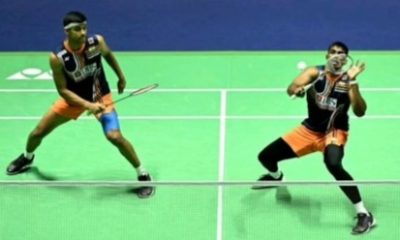Brijesh Solanki, a promising 22-year-old state-level Kabaddi player from Uttar Pradesh died on June 28 after developing rabies, weeks after being bitten by a stray puppy he rescued.
The case has sparked outrage and shock, not only over the loss of a young sportsman, but also over lack of public awareness about rabies prevention in India.
A bite dismissed, a life lost
According to family members and local residents, Brijesh Solanki spotted a puppy stuck in a drain sometime in late March or April and decided to rescue it. In the process, the frightened animal bit him on his finger. Brijesh Solanki, who was in the middle of his Kabaddi training season, reportedly ignored the wound, treating it as a minor scratch. He neither washed it properly nor sought any medical advice or vaccination.
Speaking to news agency ANI, his brother Sandeep Kumar said: “He went to practice in the village and got a little bite from a dog after pulling it out of a drain. He did not pay attention to it. We had not heard of a rabies case… The illness after the bite was confirmed in Aligarh Hospital after I reported that he was hesitating in drinking water… I demand from the government that we be provided a job because my brother was the sole breadwinner of the family…”
Brijesh continued his rigorous practice schedule as he prepared for trials for the Pro Kabaddi League next year. But in late June, he began to feel unwell. On June 26, during a practice session, he complained of tingling and weakness in his arm and difficulty drinking water. His condition quickly worsened over the next 24 hours. Family members described how he became agitated, developed hydrophobia (fear of water), and began behaving erratically — all classic signs of rabies.
Quoting Brijesh Solanki’s coach, Praveen Kumar, TOI reported that the Kabaddi player mistook his symptoms for a routine sports injury.
“Brijesh mistook the pain in his arm for a regular kabaddi injury. The bite seemed minor and he didn’t think it was serious, so he didn’t take the vaccine,” he told the national daily.
His brother, Sandeep Kumar, shared: “All of a sudden, he was afraid of water and was showing symptoms of rabies, but we were denied treatment at govt hospitals in Khurja, Aligarh and even Delhi. It was only in Noida that doctors confirmed he was likely infected with rabies. Brijesh died on Saturday while we were taking him to a faith healer in Mathura.”
Eventually, he was taken to a private hospital in Noida, where doctors confirmed he had advanced rabies. According to NDTV, by then, he was already in the terminal phase of the disease, and treatment was futile. The family even took him to an Ayurvedic practitioner in Mathura in desperation before bringing him back home, where he died.
Brijesh died on June 28. Videos of Brijesh in his final hours, writhing in pain on a cot, went viral on social media, sparking public outrage and sympathy.
A preventable disease
Medical experts and public health officials were quick to stress that Brijesh Solanki’s death was entirely preventable. According to India’s National Rabies Control Programme, rabies kills an estimated 18,000–20,000 people annually in India, the highest in the world. Yet the disease is vaccine preventable if treated promptly after exposure.
Rabies is a viral disease that affects the central nervous system and can be prevented through vaccination, according to the World Health Organization (WHO). Rabies is generally not curable once symptoms appear and is almost always fatal in humans once symptoms appear.
According to a study by researchers from the University of Edinburgh, Edinburgh, Scotland (UK), rabies is the 10th biggest cause of death due to infectious diseases worldwide
Brijesh Solanki’s death underlines the lack of awareness even among young, educated people.
A wake up call
Brijesh Solanki’s tragic death has devastated his family and shocked his community, where he was known as a disciplined and ambitious athlete. His story is now being used as a cautionary tale by doctors, activists, and journalists to educate the public about rabies risks.
Rabies is a vaccine-preventable, zoonotic, viral disease affecting the central nervous system. In up to 99 per cent of the human rabies cases, dogs are responsible for virus transmission. Children between the age of 5 and 14 years are frequent victims.
Brijesh Solanki is survived by his parents and two younger siblings.












